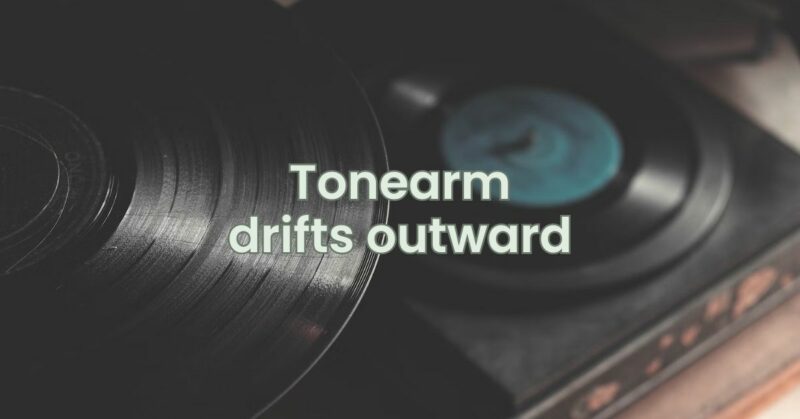A turntable is a marvel of engineering designed to produce the rich, warm sound of vinyl records. The tonearm is a critical component responsible for gently placing the stylus on the record’s grooves. However, some users may encounter an issue where the tonearm drifts outward during playback, causing misalignment and affecting the sound quality. In this article, we will explore the possible reasons behind a tonearm drifting outward and provide practical troubleshooting steps to help you resolve the problem.
1. Safety Precautions
Before attempting any troubleshooting, ensure the turntable is powered off and disconnected from the power source to avoid potential electrical hazards.
2. Incorrect Anti-Skate Setting
The anti-skate control is a vital feature that counteracts the lateral force exerted on the tonearm by the record groove. If the anti-skate setting is too high or misadjusted, it can cause the tonearm to drift outward during playback. Follow these steps to adjust the anti-skate setting:
- Set the anti-skate control to its default or zero position.
- Play a record with known good audio quality.
- Gradually increase the anti-skate setting until the tonearm glides smoothly across the record without drifting outward.
3. Worn or Damaged Tonearm Components
A tonearm that drifts outward could be a result of worn or damaged internal components. Over time, bearings and pivot points can become worn, leading to misalignment and drifting. If you suspect this is the issue, it is best to seek professional assistance from a qualified turntable technician. They can inspect the tonearm for any signs of wear or damage and perform necessary repairs.
4. Tracking Force Imbalance
Imbalanced tracking force on the left and right channels can cause the tonearm to drift outward. Check the tracking force on both channels using a tracking force gauge and adjust as needed to ensure even tracking force on both sides.
5. Record Warping or Uneven Pressing
If a record is warped or unevenly pressed, the tonearm may drift outward as it follows the contours of the grooves. Inspect the record for visible warping or irregularities. Avoid playing severely warped records, as they can cause additional strain on the tonearm and stylus.
6. Turntable Levelling
An improperly leveled turntable can also lead to issues with tonearm movement. Ensure that your turntable is placed on a stable surface and carefully leveled using a spirit level. Adjust the turntable’s feet or use isolation pads to achieve proper leveling.
7. Dust and Debris
Dust and debris can sometimes accumulate around the tonearm’s bearings and pivot points, affecting their smooth operation. Clean the area around the tonearm and the cueing lever carefully using a soft brush or compressed air to remove any visible dust or debris.
Conclusion
A tonearm that drifts outward can be a frustrating issue, but with careful troubleshooting, it is often possible to identify and resolve the problem. By adjusting the anti-skate setting, ensuring even tracking force, and properly leveling the turntable, you can achieve smooth and stable tonearm movement. Regular maintenance and proper care of your turntable will ensure exceptional sound quality and protect your cherished vinyl collection. If the issue persists despite your efforts, do not hesitate to seek professional assistance from a qualified turntable technician to diagnose and address any mechanical issues. With the right care and attention, your turntable will continue to provide a delightful audio experience for years to come.


